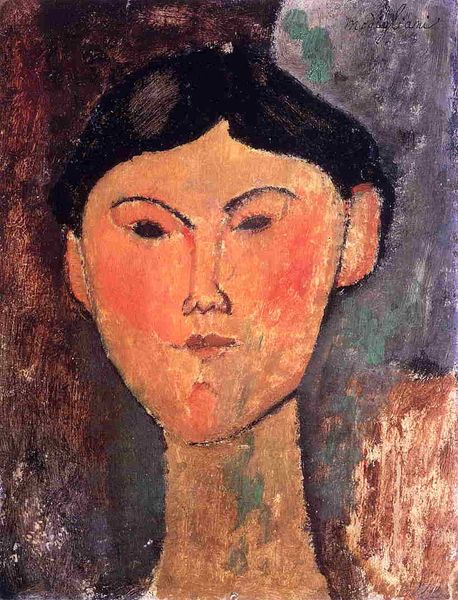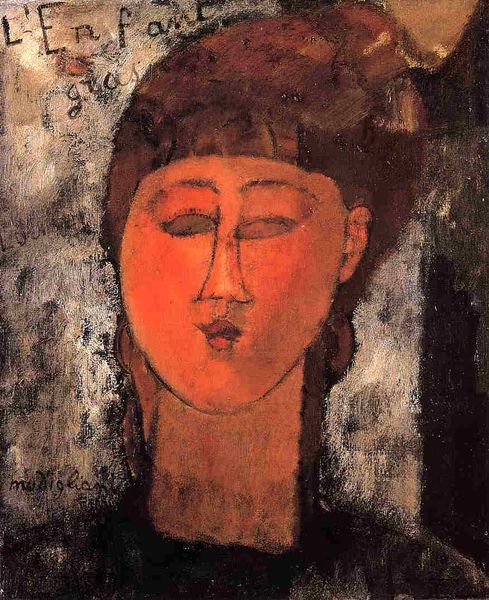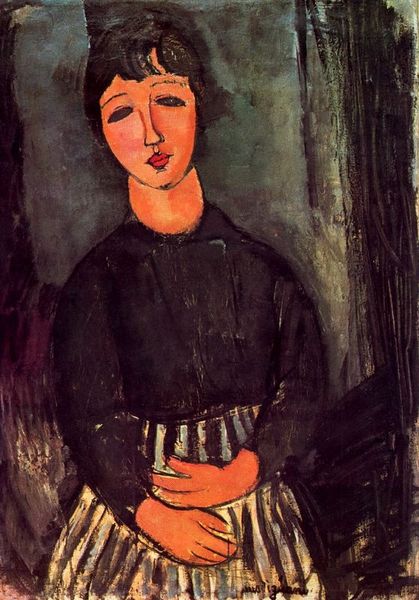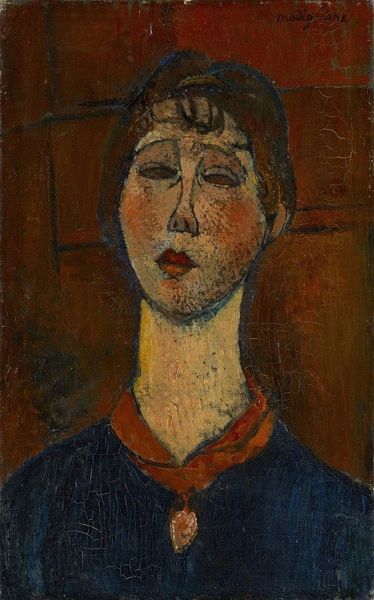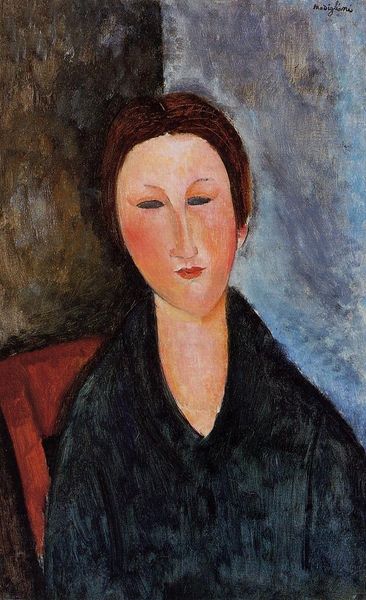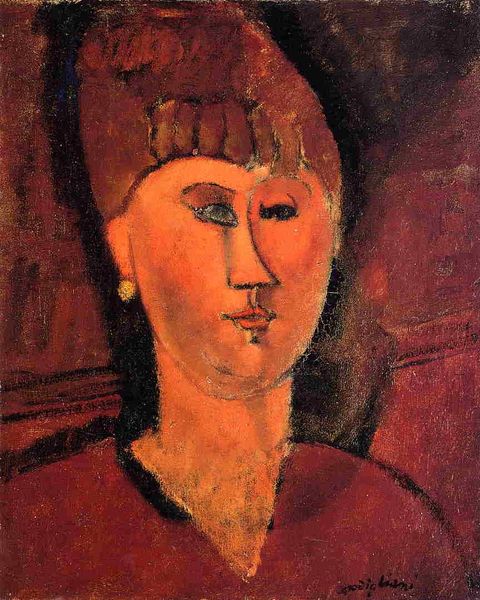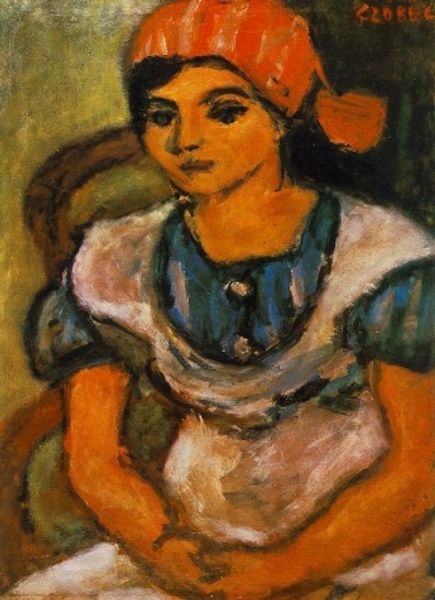
oil-paint, impasto
#
portrait
#
self-portrait
#
oil-paint
#
figuration
#
oil painting
#
impasto
#
famous-people
#
expressionism
#
portrait drawing
#
history-painting
#
portrait art
#
modernism
Copyright: Public domain
Curator: This is Amedeo Modigliani's "Beatrice Hastings," created around 1914 using oil paint. It captures Hastings, a prominent writer and Modigliani's lover at the time, in his signature style. Editor: Immediately, I'm struck by the intensity of the gaze, even though her eyes are downcast. There's something both vulnerable and defiant in the way he's rendered her. The muted colors contribute to a sense of quiet introspection. Curator: Modigliani's portraits are often analyzed through the lens of early 20th-century artistic and social upheaval. Hastings herself was a fascinating figure—a poet, critic, and a woman navigating a male-dominated literary world. He painted her numerous times, and the various depictions speak volumes about their tumultuous relationship. Editor: I’m drawn to think about the construction of the female figure in modernism. While on the surface the composition is simple and even classic—the way it draws on ideas of expressionism to, arguably, abstract the representation of her individual experiences with the gaze itself could be a political critique. The act of him painting *her* so many times is loaded. Curator: Absolutely. And within the context of his overall body of work, Modigliani’s portraits also reveal the rise of bohemianism and the changing roles of women in pre-war Paris. It’s essential to examine who had the power to depict and represent whom during that era, especially through exhibitions, collections, and critical receptions. Hastings herself undoubtedly had a significant presence in those circuits, a presence Modigliani recognized and utilized in the creative exchange between them. Editor: Considering their complex relationship, I read so much tension into those brushstrokes. It makes you wonder about the dynamics of artistic collaboration, exploitation, and the negotiation of identity in that relationship and beyond. Curator: I agree; it forces us to confront uncomfortable truths about power dynamics. This piece encourages a broader understanding of art's connection to the shaping of society and the personal lives that make up historical narrative. Editor: Examining works like “Beatrice Hastings,” it is important to think about them within the broader frame of modernist portraits of the female body, not as art-historical oddities, but as points for thinking through both art history and the issues that define contemporary experiences today.
Comments
No comments
Be the first to comment and join the conversation on the ultimate creative platform.

